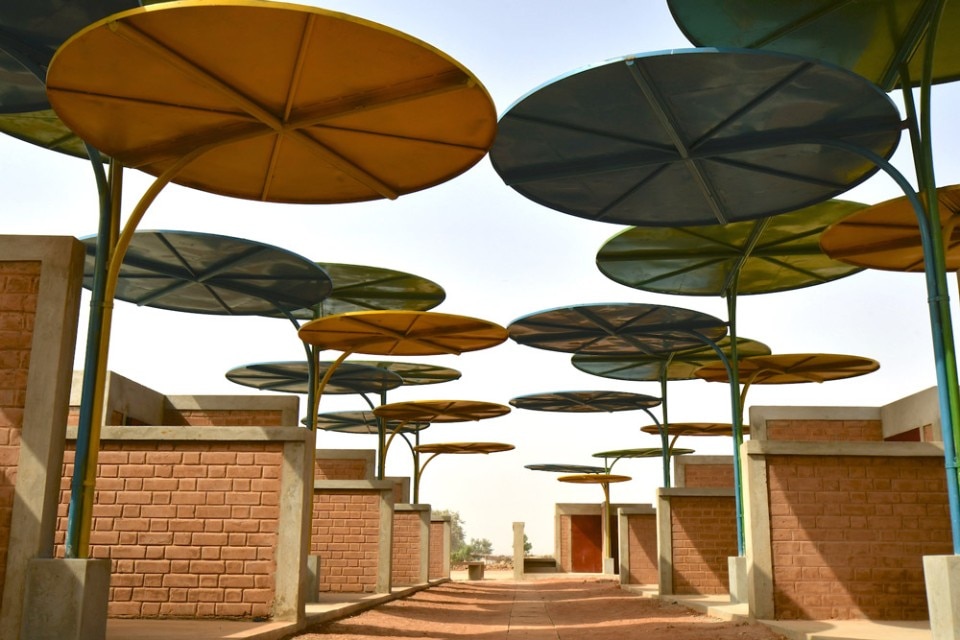Architecture as a socially empowering act – this is the thread running through the work by Atelier Masōmi, founded in Niamey, Niger in 2014 by the Nigerien architect Mariam Kamara (Saint-Étienne, France, 1979). A graduate of the University of Washington in Seattle, she began her career by training in the US and Afghanistan. Her aim is to create “spaces that have the power to elevate, dignify and provide better quality of life”.
To reach this goal, she revisits the earth architecture that originated in this part of Western Africa with the ancient Haus people, long before before the French colonisation. This connects her to the environment and the materials available in the Niger, Nigeria, Cameroon and Ghana.
Kamara – who is currently a protégée under the mentor Sir David Adjaye for the 2018-2019 Rolex Arts Initiative – pays particular attention to sustainability, climate and ecology, but integrates tradition with elements of contemporaneity to make “architecture that relies on simplicity to produce richness” and that respects the narratives of the people. Her 2018 design for the regional market in Dandaji, Niger met the need for a more permanent structure in order to accommodate population growth. A coloured metal roof is pieced together from individual circular shades at different heights, offering protection from the sun and amplifying the original experience without betraying the spirit of the place.
In the same rural Hausa village, Atelier Masōmi renovated the Hikma religious and secular complex using traditional techniques combined with metal and compressed-earth bricks made with laterite soil found on site (2018, in collaboration with Yasaman Esmaili). The bricks have similar thermal benefits to adobe, but need less maintenance. This abandoned mosque is now a community centre with a library plus study spaces that can be used by other villages nearby.
The same approach was adopted for the Niamey 2000 housing project (2016, in collaboration with Yasaman Esmaili, Elizabeth Golden and Philip Sträter), built using locally abundant earth and passive cooling techniques to protect against Niger’s scorching temperatures. The complex offers a visually contemporary alternative to expensive concrete homes.

